This post may contain affiliate links. Please read my disclaimer for more info.
Minimalism has been the most life-changing journey I’ve personally undertaken in the course of my entire life. Through minimalism, I’ve grown in more ways than I ever could have anticipated.
You see, minimalism is not just about reducing your possessions or being surrounded by all-white decor. Minimalism is at its core, an ideology that once adopted, weaves its way into all sorts of random aspects of your life and leads to a greater sense of fulfillment and enjoyment of life.
Minimalism is understanding that we don’t have to be a victim to capitalism and get lost in the endless rat race trying to constantly acquire newer, shinier objects. Instead, it’s about shifting the focus from stuff to experiences.
There is no greater joy than being surrounded only by the things that bring you the utmost happiness and finally having the mental, emotional, and physical space and clarity in your life to embrace a simpler and more experiential way of being.
Just like all change, minimalism can seem like a daunting task at first. Where do you start? What do you do? How does it all work? I’m here today to share my best advice on how to get started with minimalism and how to make the process a breeze!
Myths
A common trend I notice on minimalism forums is that people often confuse this way of living with living out of a backpack or, a certain aesthetic.
However, minimalism is a concept, and has no concrete definition that lays out exactly how much you need to own to fit the label. It means different things for different people. While some people may prefer being surrounded by lots of neutral solid colors, if you’re not into that, that’s perfectly fine. If you live in a place with extreme climate and need to have 2 different wardrobes, that’s perfectly fine too. Nobody said you have to own just two T-shirts and one pair of pants to be a minimalist. That’s just a myth.
In essence, minimalism is about owning only those objects which you need and use often and those objects that truly spark happiness within you.
So, with that out of the way, I want to get started with my first tip.
Read Up
I began my foray into minimalism almost 7 years ago due to my then-new boyfriend. The first time I visited his home, I was surprised by the very small number of items he owned and how sparse his belongings seemed. When I questioned him about this, he simply told me he was a minimalist. Intrigued, I later googled the term and learned a bit more about it from the then-limited resources on the internet.
Inspired, over the next few weeks, I got rid of almost 8-10 huge garbage bags full of stuff. However, over the next few years, I rebounded as I entered different phases of my life such as moving out of my parents’ house and then moving into my first very own apartment.
I feel that this happened because I never started off with a strong foundation. I did a cursory google search, liked the idea, and just delved in head-first and while that worked for a few months, the truth is that I didn’t have the minimalist mindset at that point and I didn’t form the values that act as a strong base for any life change.
When a few years later, I restarted my journey, I decided to do things differently and really focus on building a stronger foundation and value base first. How did I do this? Books.
I read a bunch of different books on minimalism which really resonated with me and through them, I slowly began to adopt a whole new value system which has solidified and grown in my mind through these last few years.
Out of all the books I’ve read, my top two recommendations are The Life Changing Magic of Tidying Up by Marie Kondo and Goodbye, Things by Fumio Sasaki.
Marie Kondo’s book is one of the most popular minimalism books out there and she’s the person who created the Konmari method of decluttering. I personally love this book for 2 things – the concept of sparking joy, and the specific konmari method that she spent years perfecting.
However, this book focuses a lot on her personal journey and her own unique interpretation of minimalism, which is great, but if you’re looking for more practical to-the-point kind of advice, then Goodbye, Things by Fumio Sasaki is an absolute must-read! This book is clear, direct and the author really focuses on giving concise tips for what to declutter and how to do it.
If you’re just starting out with minimalism, those two books make a great starting point!
The Concept of Joy
The concept of joy is a cornerstone of minimalism. This is what makes minimalism so amazingly enjoyable and keeps you growing and coming back for more.
When I look around my space, I’m often struck by how much joy the things I’m surrounded by, bring me. Unlike back when I had tons of stuff that I barely cared about, now, I only have things that really light a spark of joy in my heart. Every item means something to me, and even my essentials make me happy, because they’re thoroughly-researched and perform their function well.
I’m not surrounded by clutter, everything has its place, and my tidier and cleaner space really frees up a lot of mental space that used to be taken up with endless worries about endless chores. My finances are simpler. My friends list isn’t filled with people I haven’t talked to in a decade. Everything has a purpose and a place and most importantly, my happy place is not just in my head.
When you begin minimizing, take a moment to hold each item you own in your hands and see how it makes you feel.
A good place to start is clothes. Often we have a pile of clothes that we’ve never worn but are saving for “someday”. When you pick up clothes from this pile and hold each item in your hand, you may be surprised that most of them not only bring you zero joy but might even spark negative emotions. These are the things that need to go.
Throughout this journey, keep the concept of joy front and center in your mind every time you declutter. The goal is to say goodbye to the things that no longer spark a sense of joy within your soul.
Start Small
Whenever you begin something new, it’s always a good idea to start small and make it manageable. By breaking things up into smaller tasks, you not only make the process far easier on yourself, but you inject a bit more mindfulness and fun into it as well.
The best way to get started with minimalism is to start small and break up all your possessions into different categories. The Konmari method suggests starting off with clothes and in my experience, I definitely agree that this is a good category to start off with.
Start off with getting rid of pieces of clothing that no longer fit you, are torn or worn out, or you haven’t worn for months. If you live somewhere with hot summers and cold winters or extreme weather, it’s a good idea to declutter clothing only from your current season’s wardrobe.
Another thing to keep in mind is that there is no rush. You don’t have to get rid of everything overnight. Give yourself the flexibility to take your time with this process but at the same time, practice consistency and schedule out a chunk of time daily to sort out your belongings.
I think 30 minutes a day is a good amount of time to start with and when you’re feeling inspired, you’ll most likely end up going over the limit without even realizing it! On the flip side, when it gets overwhelming, you won’t feel guilty about stopping at the 30 minute mark.
Once you tackle one category, you can move on to the next such as kitchen appliances, household appliances, books, cd’s and dvd’s, cooking ware, medicine cabinet items, toiletries, makeup and beauty products…the list is endless.

Divide Things Up
Next up is how to divide your things and what to do with your different piles of things. While sorting through your belongings, these are the different piles I separate my things into.
Keep: These are things that definitely spark a sense of joy when you hold them in your hands and you’re sure you want to keep them. Put these things aside to assign a home to and put away later.
Sell: These are things that no longer bring you joy and you no longer want in your possession but are still worth some money. List these items to sell right away! Don’t procrastinate on this – it’s important to list these items immediately and also set a time limit of maybe 30-40 days. If they don’t sell within that time frame, donate them. Often we get caught up in the “wasted money” thought train and end up holding onto things far longer than we need to. Recognize that the item served its purpose in your life and now has the opportunity to provide more value to someone else.
Another important concept I want to touch on is the concept of “rent”. Think of how much rent you’re paying for each item you own. Each item you own takes up space in your house and therefore is costing you rent. When you think of your items this way, it can be easier to let go of items that might be costing you more “rent” than they’re actually worth.
Donate: These are also things that you no longer want but they’re probably worth less than $10-$20 or are from categories that can be hard to resell such as non-branded clothing or random trinkets. These items should be put into a bag or box and be put down either next to your front door so you can grab them on your way out next time, or even better, straight into your car so you remember to stop by your local donation store next time you leave the house.
Maybe: Lastly, we have the maybe pile. Things you’re on the fence about and not sure whether you should keep them or not. A good strategy I recently stumbled upon is to only allow one thing at a time in this pile. If you come across a 2nd item that you’re unsure about, go back to the first item and decide what you want to do with it before letting the 2nd item enter the pile.
If this strategy doesn’t work for you and you just have way too many maybes, grab a box, write the date on top, and put all your maybe items in it. Then, simply put the box away somewhere out of sight and set a reminder on your phone for 3 months. If during the next 3 months, you pull something out of that box, you can move it to your keep pile, otherwise once the 3 months are up and your phone rings, it’s time to donate that entire box. Don’t bother opening it when that time comes – if you really wanted anything in it, you would have pulled it out in the previous 3 months.
Finally, anything that’s left over is probably trash, so you can throw all of those items away.
Give Everything a Home
One of the best benefits of minimalism is how effortlessly tidy your place slowly becomes. This stems from the underlying principle of giving every object its very own home. For example, have a dedicated place for hanging your purse or for setting down your wallet and keys after you come back home.
Another big offender of messiness can be your limbo clothes – the ones that aren’t yet dirty enough to toss in the hamper, but are not clean enough to go back into your dresser. Have a dedicated space in your closet for these clothes and hang them up as soon as you take them off rather than tossing them on that one chair we’re all guilty of having.
From the tiniest item to the biggest one, take a few moments to decide where that item will rest when it’s not in use.
Adopt New Habits
In order to make lifestyle changes, we have to modify our existing habits and adopt better ones otherwise it’s easy to relapse into our old behaviors.
The first mindset shift that’ll help you most when starting out your journey into minimalism, is to give up the temporary pleasure of mindless shopping. I do this by never buying things immediately. If I want to buy something, I add it to my wishlist first. Then, I let it sit on my list for a few days or even weeks and then I buy it if I still want it and I’ve consciously budgeted for it. Not only does this method make my wallet happy, but it’s surprising how sometimes the urge to buy something specific fades away and I realize I don’t really want the object anymore.
Next up, make peace with empty space. When I moved into my first apartment, I didn’t have a lot of stuff. However, over the next few months, I ended up buying all sorts of furniture and decor items and other knick-knacks to fill up the empty space. When we have empty space in our homes, we often unconsciously feel the urge to fill that space up because of our previous conditioning.
But, there is beauty in simplicity and by realizing that not every single square foot of your home needs to be filled with stuff, you can really eliminate a lot of unnecessary material possessions from your life.
Once you’ve tackled your shopping habits and no longer feel the need to fill up empty space, you can slowly start making small changes that add up over time and result in a more minimalist lifestyle. Some examples are refraining from buying duplicates, switching over to paperless bills (which is also great for the environment!), setting aside a few minutes each week to reevaluate your belongings and more.
If you’re reading this, you’ve already made the first step in your minimalism journey and with time and effort, you’ll start seeing the tangible results of your hard work. Lifestyle changes and mindset shifts can be challenging at first, but the process is so incredibly rewarding!
I hope this article helps you get started with your own minimalism journey and if you have any questions, leave them in the comments below and I’ll answer them as best I can.


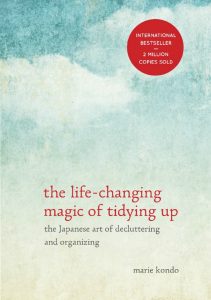

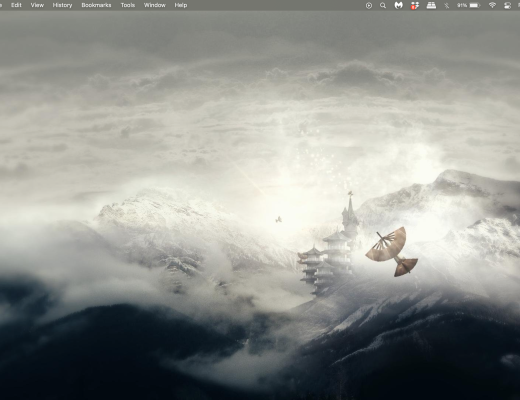
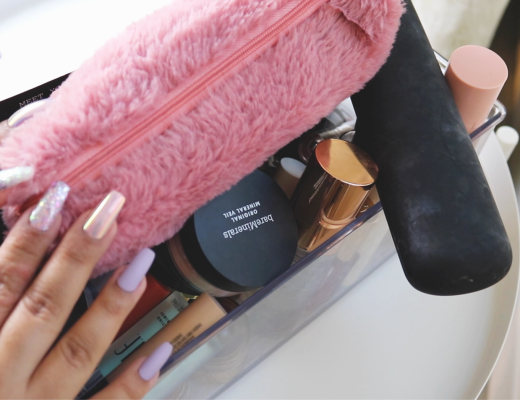
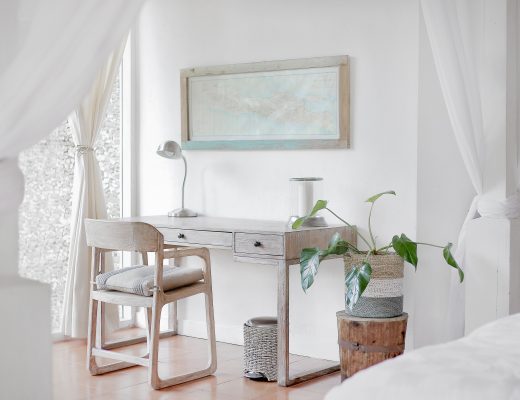
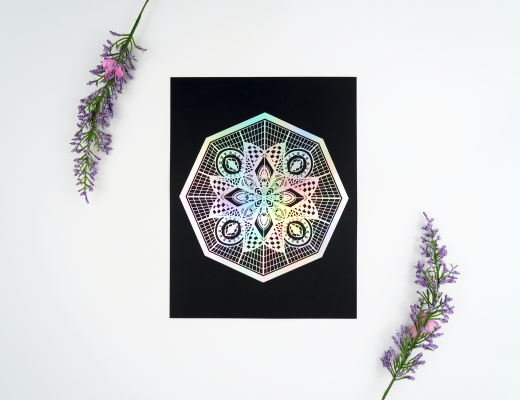
No Comments